Soil health pivotal for new Arable Insights farmers
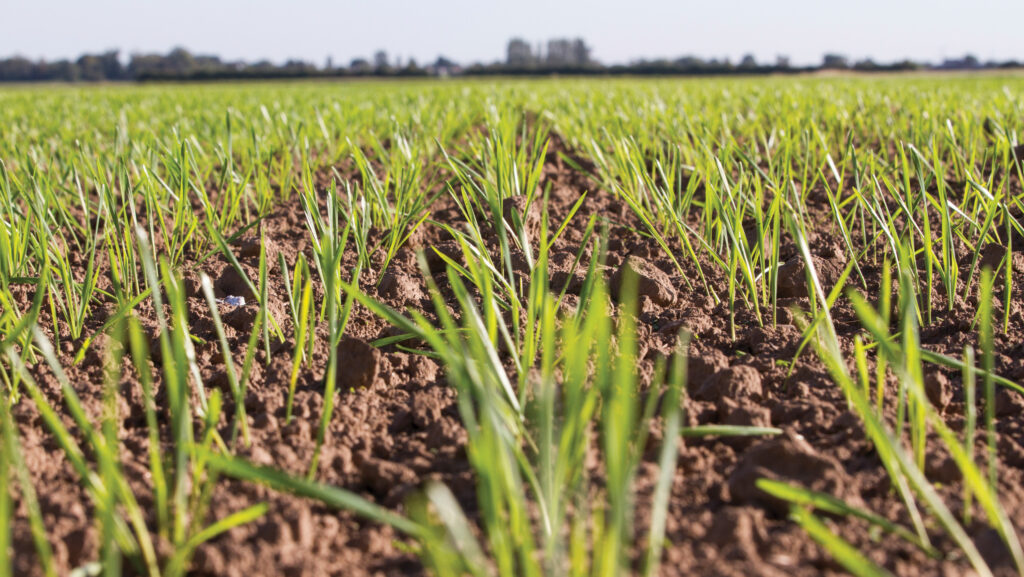 © GNP
© GNP A new season, a new farmer panel for Arable Insights.
Meet eight farmers who all prioritise soil health to varying degrees within their business.
See also: Harvest highs and lows from Arable Insights farmer panel
At a glance: who are the new Arable Insights farmers? |
|||
|
Region |
Name |
Address |
Farm size |
|
North |
Philip Metcalfe |
Caldwell, North Yorkshire |
680ha |
|
Wales |
Richard Anthony |
Bridgend, Glamorgan |
1,200ha |
|
South Midlands |
Charles Paynter |
Yielden, Bedfordshire |
221ha |
|
South East |
Barney Tremaine |
Midhurst, Sussex |
1,280ha |
|
East Midlands |
Colin Chappell |
Brigg, Lincolnshire |
690ha |
|
Scotland |
Doug Christie |
Leven, Fife |
576ha |
|
South West |
John Farrington |
Wiveliscombe, Somerset |
243ha |
|
East Anglia |
Jo Franklin |
Westmill, Hertfordshire |
1,000ha |
East Midlands – Colin Chappell, Chappell Farms, Brigg, North Lincolnshire
Farm size: 690ha
Planned cropping
Winter wheat, winter barley, winter beans, marrowfat peas, vining peas, oilseed rape, spring oats, spring barley, miscanthus, fallow, permanent pasture and 95ha of Sustainable Farming Incentive (SFI) Countryside Stewardship
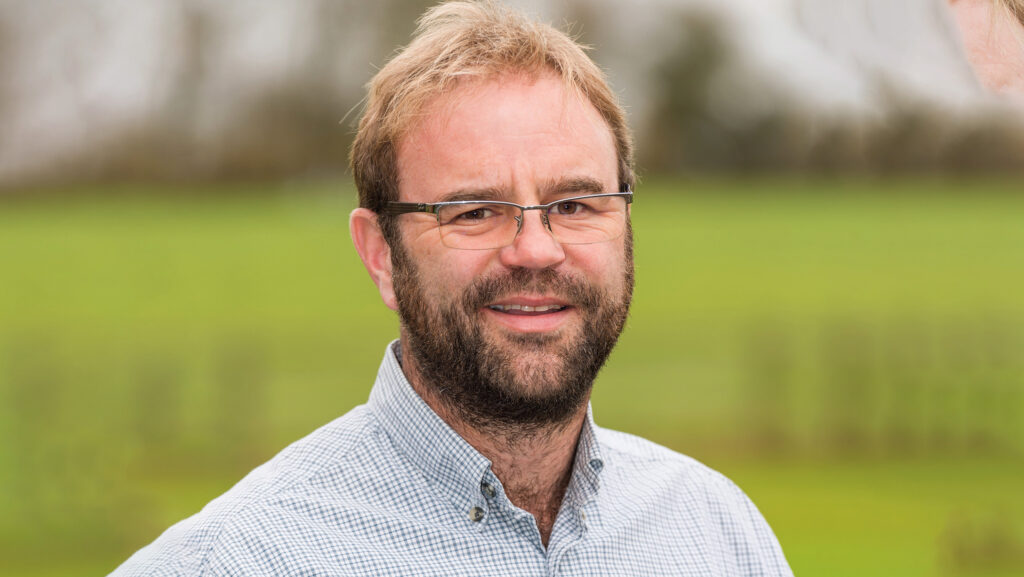
Colin Chappell © Alan Bennett
Farming at sea level on high magnesium, heavy clay soils with a river that runs at the same height as surrounding land is not a recipe for an easy farming life.
But Colin Chappell has embraced the challenges that brings and revels in finding solutions to seemingly impossible problems.
“I look at things in a different way to others,” he says.
Challenged by his AHDB Monitor Farm group to introduce direct drilling on his farm, it took him four years to find a relatively consistent method.
Despite this, the process taught him a lot about soil health and the importance of good seed-to-soil contact for maintaining yield.
Now his focus is on healthy soil, healthy plants. “The soil is the foundation to reducing inputs for the growing plants.”
It has allowed him to reduce nitrogen while mostly maintaining protein requirements.
However, flooding remains a huge challenge that threatens to undo a lot of the positive work from the past few years.
“Even with improved infiltration rates some land was stood in water from October to March last season.”
The financial cashflow impact of lower incomes in 2024 is being felt as he enters the 2024-25 cropping season.
South West: John Farrington, Frys Farm, Wiveliscombe, Somerset
Farm size: 243ha
Planned cropping
Winter wheat, maize, spring beans, spring oats, permanent pasture, herbal leys plus Mid Tier Countryside Stewardship and SFI agreements
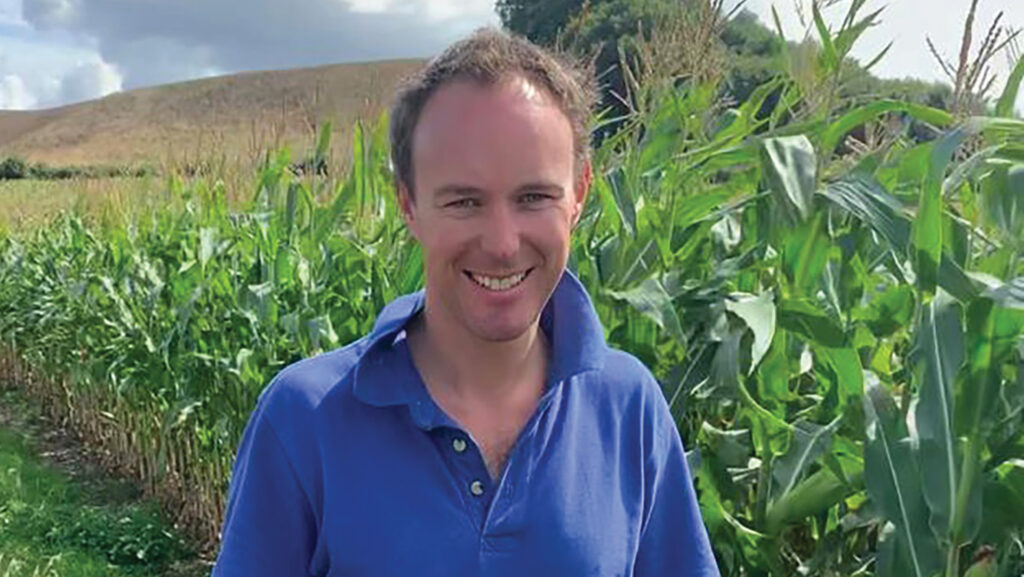
© John Farrington
AHDB benchmarking highlighted to John Farrington that he needed to adjust his input costs to realistic yields, rather than striving and failing to achieve 10t/ha every year.
It has led to an overhaul of the farm, where soils are given love and attention.
He’s been direct-drilling since 2018, while sheep were introduced in 2021 ending a gap of 20 years without livestock on the farm.
The all-year outside sheep enterprise is integrated into the arable cropping rotation as much as possible, grazing cover crops, winter wheat and stubble turnips.
The changes have improved soil structure, increased water retention, reduced soil erosion and improved earthworm numbers, John says.
“The challenge is knowing how far to push things – for example, when to use a product or risk not using, when to use a cultivation for the benefit of the crop.
Overall we must remain flexible and be willing to adapt as we need a viable crop to stay in business.”
North: Philip Metcalfe, Foxberry Farm, Caldwell, North Yorkshire
Farm size: 196ha
Planned cropping
Winter wheat, winter barley, winter oilseed rape, winter beans, spring barley, temporary and permanent pasture, small area of land rented out for potatoes, plus SFI and Countryside Stewardship
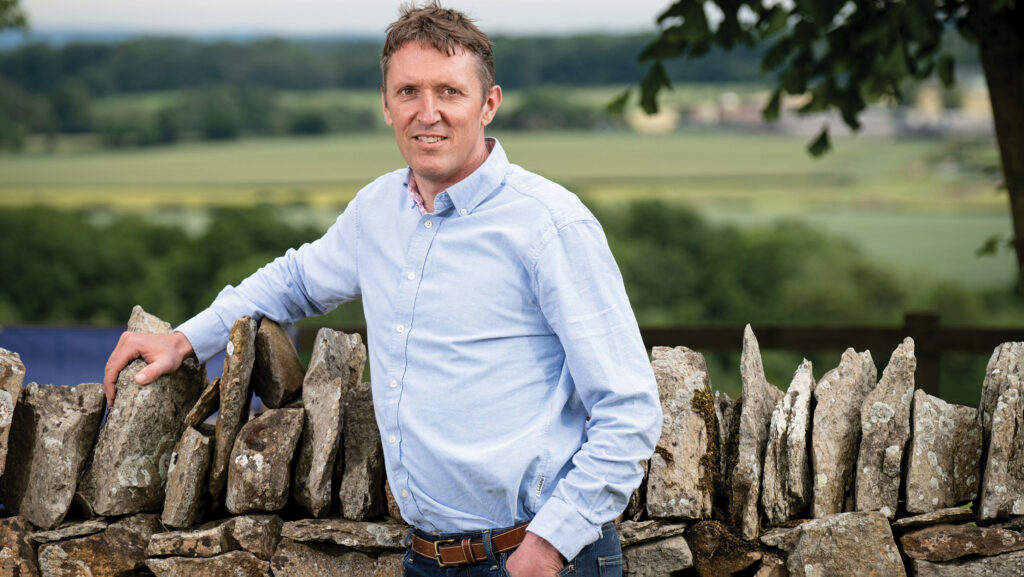
Philip Metcalfe © Jim Varney
A multiple sclerosis diagnosis in 2010 for Philip Metcalfe has meant a reduced day-to-day hands-on role, but helped provide more time for a meticulous focus on the farm’s management.
This has included scrutinising costs and finding new opportunities to add value and generate new income streams.
It is part of the reason why he has fully embraced various Sustainable Farming Incentive options, where they add either financial and/or environmental benefits at Foxberry Farm in North Yorkshire.
The farm has diversified into other enterprises including direct sales, equestrian, commercial and residential lets and a holiday cottage.
On the farm, there is a focus on improving soils through a more diverse rotation, reduced tillage, growing overwintered cover crops and applications of chicken muck and other manures brought onto the farm via straw-for-muck deals.
“Soil health is so important,” he says. “It holds the key to future crop production.”
South Midlands: Charles Paynter, Rifle Range Farm, Yielden, Bedfordshire
Farm size: 221ha
Planned cropping
Winter wheat, peas, spring oats, SFI and Countryside Stewardship options, woodland
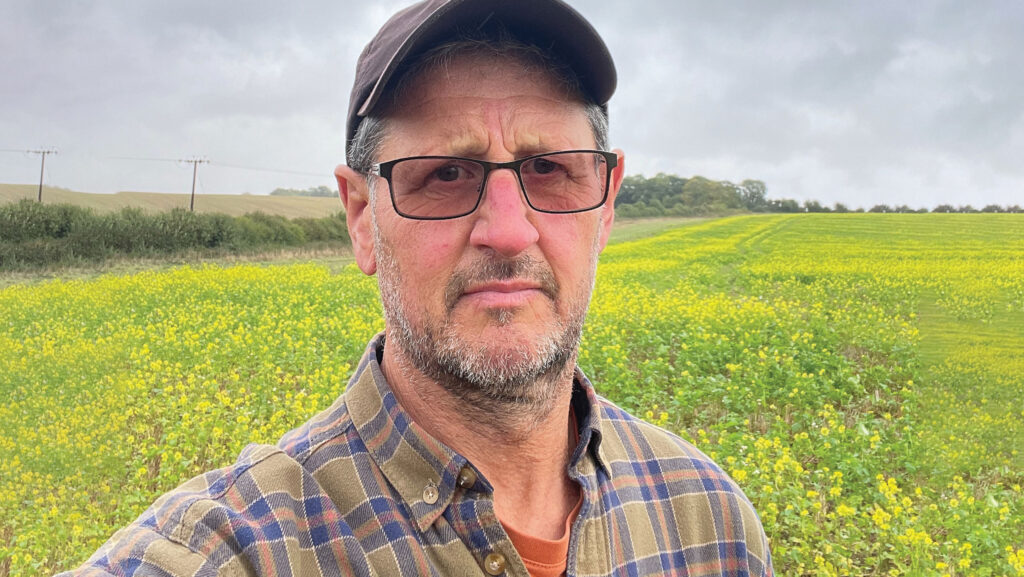
Charles Paynter © Charles Paynter
A growing realisation that chemical-based control of weeds, pests and diseases was becoming much less reliable with resulting crop failures and lower profitability has very much been on Charles Paynter’s radar.
It has prompted him to investigate regenerative farming practices, triggering a change in the farm’s mindset.
“During this process, I also joined the ZOE human nutrition trial,” Charles says.
“This alerted me to the inherent dangers in the way we produce food, and how microbial diversity is key to much of our health.”
The similarities in the processes occurring in our guts and the soil microbiome are striking, he adds.
“This triggered a sea change in what I am trying to achieve as a farmer, and I’ve started to focus on soil health and what I can do to improve it.”
The biggest challenge during this transition has been not to forget previous hard-earned knowledge while trying to reset thinking and correctly evaluating what’s most important in any given scenario.
Charles says there are a lot of encouraging signs that the changes he has implemented are having a positive impact on the farm.
This is despite some pretty big mistakes through not understanding the farm’s context, or trying to rely on the benefits of improved soil health before actually achieving it.
Scotland: Doug Christie, Durie Farm, Leven, Fife
Farm size: 576ha
Planned cropping
Winter wheat, spring barley, spring wheat, spring beans, organic barley and oats and grass
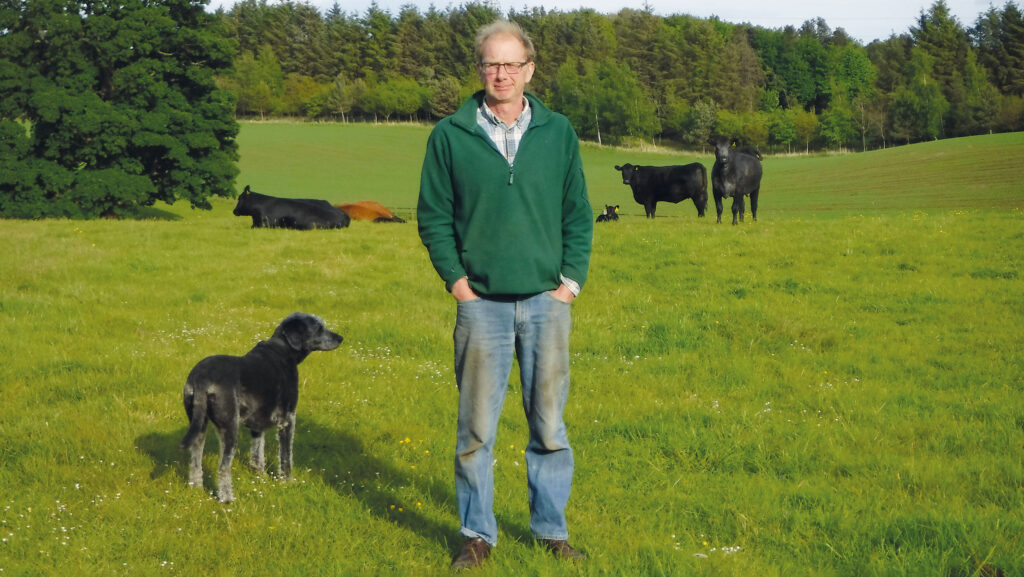
Doug Christie © Doug Christie
With a farm split roughly 60:40 between organic and conventional production, Doug Christie has had a long focus on soil health.
He first started to make changes to the way he farmed in 1999, initially in an attempt to reduce writing cheques for machinery, fuel use, synthetic fertilisers and chemicals.
“It was soon evident succeeding was not just about reducing tillage – cover crops had to be factored in, rotations changed with more diversity in cropping, soil cover maintained, and the timeliness of operations increased,” he says.
He runs an organic beef enterprise on the organic part of the farm, calving 160 cows in the spring.
Creating a mob grazing approach suitable for Scottish conditions has been one of his greatest challenges and successes, he says.
But the successful efforts to improve soil health and enhance natural capital outcomes has come at the cost of output, which is leading Doug to question how he proceeds.
“I’m beginning to understand that financially chasing the red queen still pays the bills.
“There is very little income available for the true worth of natural capital elements on the farm, and limited scope for additionality without having my hands tied behind my back.”
With manures from his organic beef enterprise not allowed to be used on his conventional land under organic rules, he’s also realising there is a reason why integrating livestock is one of the principles of farming regeneratively.
“It may not be livestock per se,” he says.
“Perhaps we need perennial crops through which herbivores can provide not only an income but also enhance and manage the ecosystem services provided by the perennials.
“Turnip Townsend was not wrong.”
South: Barney Tremaine, Cowdray Home Farms, Midhurst, West Sussex
Farm Size: 1280ha
Planned cropping
Winter wheat, maize, stubble turnips for seed, buckwheat for seed, triticale, herbage seed, herbal leys, legume fallow, silage ley, other stewardship options and permanent pasture
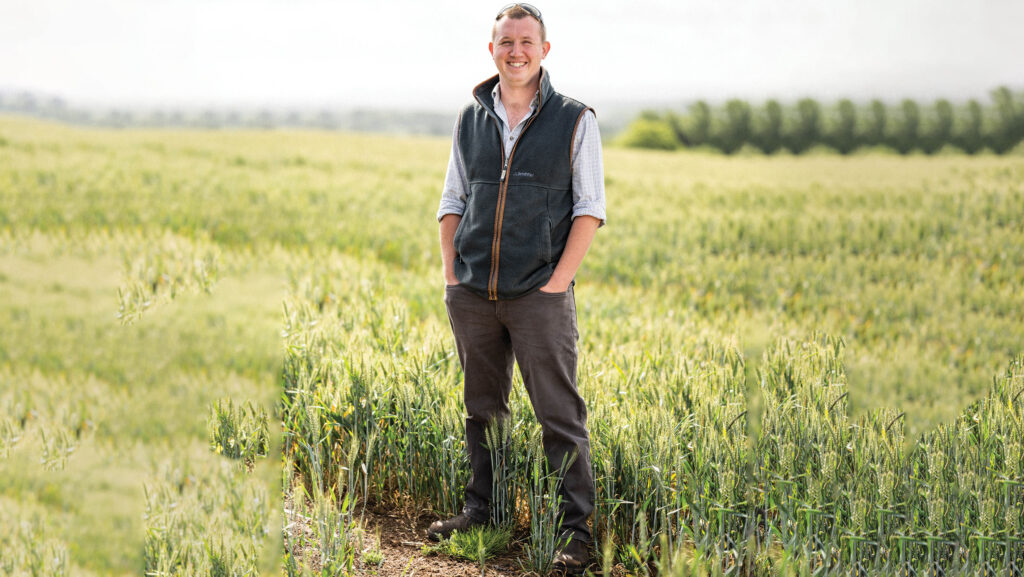
Barney Tremaine © Matt Austin
Part of the large, diversified Cowdray Estate, Cowdray Home Farm encompasses over 1,200ha of arable and forage crops, plus dairy and Aberdeen Angus beef cattle enterprises.
The farm aims to operate in a sustainable and environmentally responsible manner.
Core objectives are to improve soil structure and health, reduce fuel consumption through reduced tillage, and balance the use of fertilisers and other inputs against their environmental credentials.
This has led farm manager Barney Tremaine to implement practices with a conservation or regenerative bias.
“The main reasons for focusing on soil health were the challenges with soil erosion and fertility on our lighter land, and drainage on the heavy land, leading to impeded soil structures and compaction.”
Cropping on the estate’s arable soils is evolving although winter wheat and maize are mainstays, with the maize and triticale crucial for the dairy enterprise.
Traditional break crops have been switched in favour of niche options such as stubble turnips and buckwheat for seed and larger areas of environmental stewardship options.
The estate is likely to face key challenges in the coming seasons.
These include coping with extreme weather on vulnerable soil types, meeting the capital requirements of future legislation and emissions, and the squeeze on arable margins from commodity prices.
Wales: Richard Anthony, R&L Anthony, Sealands Farm, Bridgend
Farm size: 1,200ha
Planned cropping
Winter wheat, maize, oilseed rape, westerwolds ryegrass and forage rye, lupins, cover crops
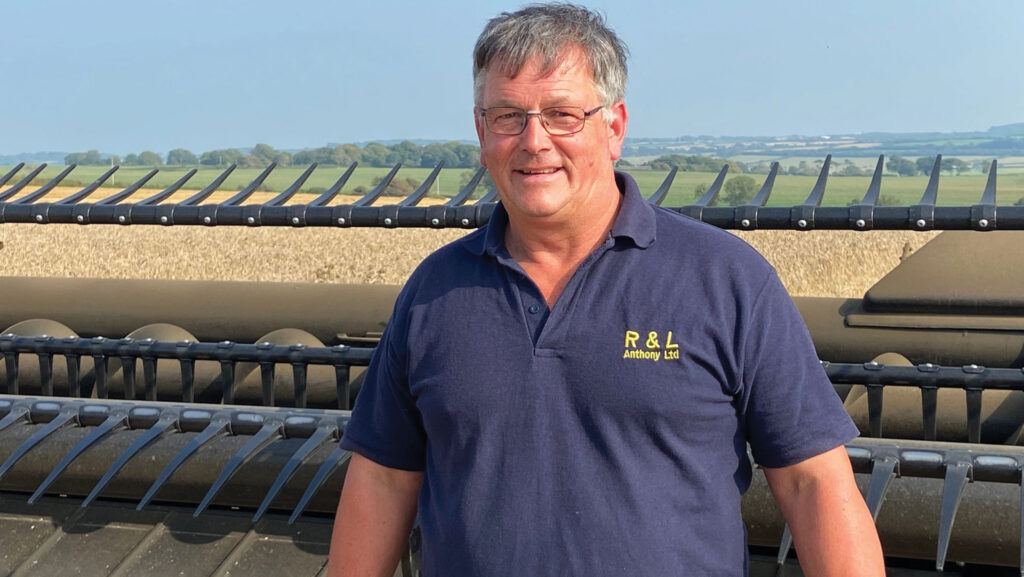
Richard Anthony © Richard Anthony
Richard Anthony and his wife Lyn built the farm up over the past 25 years from a 45ha tenanted farm to a diverse business covering 1,200ha.
Building resilience into the farming system has been a key driver for them.
Soil health is a priority, as is scrutinising and adapting based on observations.
Assessing soils throughout the year has become second nature, especially looking at soil structure, rooting depths, and any required cultivations to help inform future decisions, he says.
The farm uses very little bagged fertiliser, with most nutrients applied as digestate, which is applied with a precision dribble bar or tankers to crop need.
He is also trying to reduce and optimise fungicide use on a farm where spray days are limited.
Reduced tillage, especially direct-drilling of most crops except maize, is favoured, but he has found rooting depth is important to monitor on the farm, where drought can be a challenge.
Areas have also been set aside to create wildlife-friendly zones and corridors.
These include canary grass and miscanthus planted to link woodland areas, plus areas of wild bird cover, sensitively managed hedgerows and flowering margins around oilseed rape fields.
East Anglia: Jo Franklin, Kaiapoi, Cherry Farm, Westmill, Hertfordshire
Farm size: 1,000ha
Planned cropping
Winter wheat, borage, peas and spring oats; SFI and Country Stewardship options, permanent and temporary grass leys
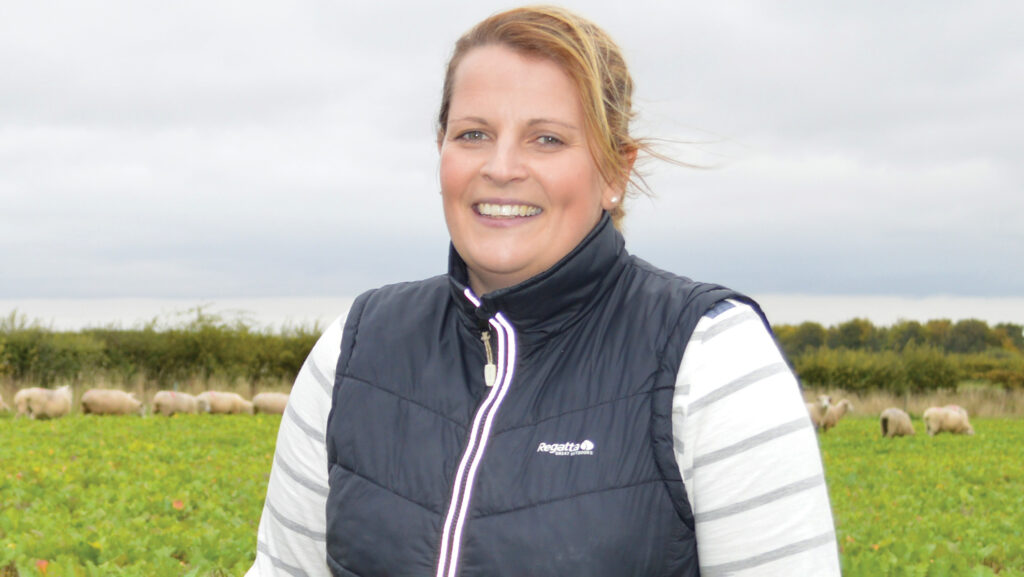
Jo Franklin © MAG/David Jones
Tenant farmers Jo Franklin and partner Rob Hodgkins set up arable farming and sheep breeding business Kaiapoi in 2013, following their Nuffield Scholarships, with just 200 ewes on 24ha of rented grass.
The business now integrates arable and 1,500 New Zealand Romney sheep, plus 500 dairy cross Romney’s across its 1,000ha.
“Our aim is to make money while closing the loop wherever possible and not bring things in,” Jo says.
“For example, grazing fields with sheep means we use fewer fertilisers, and also results in requiring lower amounts of sheep feed and makes us more money.”
Drainage is a key focus. “We do all our own ditching – we want well-drained soils that crops can thrive in.”
The farm employs a strip-till establishment system rather than a true direct drill, with Jo believing that helps mitigate soil conditions that are less than perfect.
Integrating sheep into the arable rotation brings life back into soils, helping to rejuvenate the food pyramid.
“We’ve seen farmland bird numbers take off on land we graze because with the sheep dung there’s plenty for them to pick over.”
Jo is concerned about the future of the arable sector.
The Sustainable Farming Incentive has brought challenges to the tenanted sector for long-term planning and pushing land rents, at least locally in Hertfordshire.
This situation is exacerbated, as contractors fight over smaller areas of land to continue financing fixed machinery hire purchase agreements.
“We’re very positive people, but these are seriously worrying times, and that’s without factoring in whether we can get winter crops drilled.”

